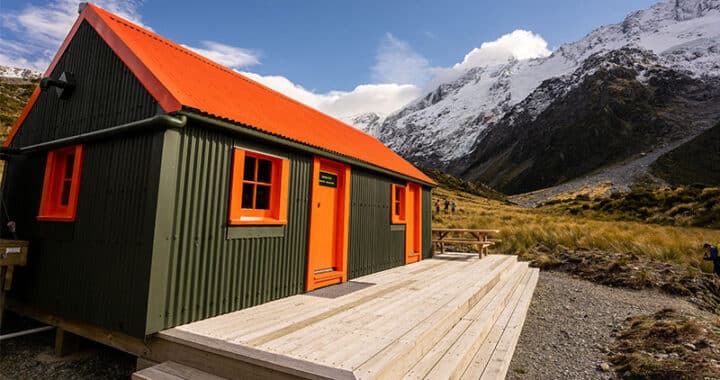Protection areas in Hauraki Gulf to triple under new legislation
3 min read
The Bill will be introduced into Parliament before its conclusion ahead of the election. Photo: Adobe Stock
Marine protection areas in the Hauraki Gulf/Tīkapa Moana will almost triple under the new proposed legislation announced by the Government.
The Hauraki Gulf/Tīkapa Moana Marine Protection Bill includes 19 new marine protection areas, increasing coverage within the Gulf to 18%, up from the current six percent.
Bottom trawling and Danish seining will also be banned from large areas, and there will be a tailored fisheries plan to support the Gulf’s unique ecosystem.
New high-protection areas won’t allow commercial or recreational fishing but will allow for customary practices of tangata whenua.
The marine reserves to be extended are Cape Rodney-Okakari Point Marine Reserve (Goat Island) and Whanganui
A Hei (Cathedral Cove) Marine Reserve on the Coromandel Peninsula.
The Bill will be introduced into Parliament before its conclusion ahead of the election.
Prime minister Chris Hipkins joined conservation minister Willow-Jean Prime and oceans and fisheries minister Rachel Brooking to unveil the new marine protections.
“The Hauraki Gulf – Tīkapa Moana – is an absolute treasure and needs to be protected for the enjoyment of future generations,” Hipkins said.
“From Anniversary Day yacht racing to time with families, this beautiful blue backyard is where Kiwis in the region have some of their best experiences.
“It’s also an essential and traditional source of food, and a vital part of our economy for the tourism, transport, and seafood sectors.”
A recent assessment put the economic value of the Gulf at $100 billion.
“The Gulf, however, is at risk and its ecosystems are under immense pressures, causing concerning declines in marine life and seabird populations. Those who live and work in the Gulf can see it’s changing. There’s more pollution and fewer birds,” Hipkins said.
The Government received more than 7500 submissions on the marine protection proposals at the end of last year and received more than 10,000 submissions on the Hauraki Gulf Fisheries Plan.
The Hauraki Gulf Fisheries Plan is aimed at restoring the health of the Hauraki Gulf Marine Park environment by developing fisheries management objectives.
In June, the Hauraki Gulf Alliance – comprising Forest and Bird, LegaSea, WWF, New Zealand Sport Fishing and Greenpeace – presented a 36,000-strong petition to MPs calling for bottom trawling, scallop dredging, and Danish seining to be banned from the Hauraki Gulf Marine Park.
Forest & Bird is calling on all political parties to back the legislation to increase protection in the Gulf, saying the 19 new protected areas are a big step towards a target of protecting 30% of New Zealand’s only marine park.
However, Forest & Bird said it’s deeply concerned that Danish seining and bottom trawling will still be allowed in large parts of the Hauraki Gulf under the new plan.
“The Government has missed an important opportunity to end bottom trawling in the Hauraki Gulf. This hampers the much-needed efforts to urgently restore the mauri of Tīkapa Moana,” said Forest & Bird chief executive, Nicola Toki.
“This is the first fisheries plan that takes an ecosystems-based approach and also that is tailored for a specific area. It must not be the last.”
Meanwhile, the Green Party said it would take action to ban bottom trawling in the Hauraki Gulf entirely.
“The proposed new marine protection areas together with the existing cable protection zone will cover only 18% of the Gulf. This falls well short of what is required,” it said.
Seafood New Zealand says fishers are keen to play their part to help restore the health of the Hauraki Gulf.
To be successful, management measures are also needed to stop invasive species, such as Caulerpa, and to limit run-off and pollution.
“We are keen to continue to work with tangata whenua, conservation groups, recreational fishers, and the regulator to improve the health of the Gulf and to hold ourselves to account – continuously improving our practices while ensuring we can still provide fresh fish for the people of Auckland and beyond,” said Seafood New Zealand chief executive Jeremy Helson.
“We hope there will be true consultation on where the new restrictions are.”
Helson said Seafood New Zealand is pleased to hear other threats to the health of the Gulf being taken seriously.
“It is good to hear the growing levels of concern about invasive seaweed and runoff. Our fishers see the impacts of these things close up. Our lives and livelihoods are tied to the health of the Gulf.”
Words by Shannon Williams



